In the UK, it can feel impossible to strike the right balance. Winters have us cranking up the heating, while hotter summers keep fans and air conditioners running. All that extra energy use quickly pushes up bills – something we’d all rather avoid.
At night, the challenge only grows. Getting comfortable often feels like a Goldilocks problem, as you’re either too hot or too cold, and rarely just right. Recent Met Office statistics indicate that summer 2025 is shaping up to be one of the warmest on record, with a few weeks still to go. Throughout the months of June and July, the temperature was consistently above average, and we've experienced four heatwaves so far. So, it comes as no surprise, really, that us Brits are struggling to keep cool enough to get enough zzzs.
But it doesn’t have to be that hard, or cost a fortune. Passive temperature regulation from natural materials, such as bamboo, can work wonders when compared with active regulators like air con, fans and water-cooled toppers.
If you want to learn how to get a comfortable snooze worthy of Goldilocks, keep cool, and keep the bills down, keep reading for the lowdown on natural temperature regulation vs powered cooling.

Why sleeping temperature matters
The best room temperature for sleep is 18.3°C, specifically, according to the Sleep Foundation. And, while the ideal temperature changes from person to person, it is advised that a bedroom’s thermostat is set between 15.6 and 20°C.
Too-warm bedroom temperatures can make it hard to fall asleep, causing discomfort, restlessness, and fatigue, and affect the time spent in different sleep stages. When we’re too hot, it throws our circadian rhythm off, and we can find it hard to doze off. REM sleep can become fragmented when we’re too hot, and can have a profound effect on how you feel when you wake up the next morning – a foggy head, irritable, confused, and even with a weakened immune system.
What counts as natural temperature regulation?
Breathable fabrics & Fillings
Natural fabrics can regulate our body's temperature through their breathable fibre structure. Cotton and linen, for example, have porous structures, which allow airflow to circulate and heat to escape. The protein-based fibres of wool, on the other hand, act as moisture wickers. Bamboo has it all, wrapped into one, with its naturally breathable fibres which promote airflow, moisture-wicking properties that draw sweat away from the body and allow it to evaporate, and its natural thermoregulating properties which allow the fabric to adjust to your body temperature. Hint: Bamboo is a great year-round option for this reason alone.
- Cotton
- Linen
- Bamboo
- Wool
Bamboo cooling bedding
Our bamboo bedding is a total wonder fabric, that’s hypoallergenic, moisture-wicking (40% more than cotton, in fact), and thermoregulating – which makes it perfect for year-round use. Bamboo linens promote a cleaner sleep with bedding that stays fresh for longer, because it’s odour-resistant and has natural antibacterial properties. Panda’s bamboo in particular is organically grown in the world’s most sustainable forests, without pesticides and only water from rainfall.
Our Cloud Bamboo Summer Duvet is 4.5 TOG, and although it is more lightweight than our year-round option, it still feels luxurious and fluffy. Crafted with a pure bamboo cover, it offers a gentle, cloud-like softness and excellent breathability that will keep you comfortably cool as you sleep.
Other passive hacks
During the summer, there are other ways to keep your home and body cool without needing to crank the AC. During the night, open your windows to let air in when it's at its coolest, but draw blackout blinds during the day to keep the sunshine from filling the room. If the air is still stuffy, consider introducing houseplants to the space, as they can help alter the temperature of your surroundings through the process of photosynthesis. Look out in particular for ficus benjamina, known as weeping fig, rubber plants, palms and aloe vera. If you don't have blackout blinds or heavy curtains, you can also keep sunlight out by using awnings outside or placing big plants in front of your windows to create extra shade.

Powered cooling options
Air conditioning
Air conditioners lower the temperature in a room by drawing out heat and delivering a cool airflow. Although wall-mounted units are more powerful and will cool the whole house, they’re rarely used enough in the UK to make the installation worthwhile. For most people, a portable air conditioner does the trick. However, they come with lots of considerations – most window kits only work with sliding or sash windows, meaning that you’ll need to have your window open, and it isn’t the prettiest thing to look at. Air conditioning units are heavy and known to be expensive to run. In fact, Currys explain that eight hours of daily use works out at around £2.50 per day, so a month of air con usage would add £75 per month to your household bills (and the cost of buying a unit isn’t cheap, either). Their noise levels are similar to that of background noise (music, chatter), and somewhere between mid-40s and 65dB.
Smart & Traditional fans
Fans are a lot more energy efficient than air conditioners, but can be similarly noisy – depending on which model you choose. Different models work in different ways, for example, tower fans are designed to maximise air flow, while tabletop fans will deliver a burst of cool air perfect for your working space. Traditional bladed fans spin around their angled blades, which generate lift and create a pressure difference that pushes cool air out. Bladeless fans, which are more popular these days, use the motor in the base to draw air in and then push it out through the fan’s ring. We’re spoilt for choice with fans, really, with smart options becoming increasingly popular – many of which come with timers, the option to control via an app, and some that even clean the air, and let out bursts of water for extra cooling.
Active bed‑cooling pads
Then, there are cooling pads for your bed. These can be a popular option with couples, because there are options to zone temperature choices, and control via an app. They’re rather nifty and smart, and will use your biometrics to find the ideal temperature for you, with some even playing you soothing music as you sleep. Typically, a hose connects to a control unit, which sits near your bed, and circulates water through the mattress pad. They’re expensive to buy, costing upwards of a few hundred pounds to thousands for an all-singing, all-dancing option, and rely on electricity each night, so they certainly aren’t cheap to run. It would certainly be a much more economical and eco-friendly option to use a Bamboo Mattress Protector, and control your temperature more naturally.
Environmental & Health considerations
Fans are more environmentally friendly than air conditioners, and certainly cheaper than active bed-cooling pads, but, none of these options will last you a lifetime, and they will all contribute to a bigger carbon footprint. Sadly, Our World In Data explains that air conditioning causes around 3% of greenhouse gas emissions, and with global warming only getting more concerning, and temperatures rising, this cyclical chain is one we need to try and break.
Renewable bamboo is a much more friendly option, for your purse and our environment, and at Panda, protecting the planet is at the core of what we do. Bamboo is magical – it absorbs carbon as it grows, regenerates quickly post-harvest, and contributes to biodiversity. A bamboo plant grows up to three feet per day, requiring only rainwater and absolutely no pesticides. Do you see why we love it? Our bamboo in particular is sourced from managed forests, ensuring wildlife is left unharmed and the environment and communities in the surrounding area are protected too. As for the final product that arrives on your doorstep, these textiles are produced using a closed-loop process to minimise water waste.
![[SingleVintagePinkColorBundle] Cloud Duvet in Ultimate Bundle Vintage Pink Bundle with Vintage Pink Bedding Set and Eye Mask](https://cdn.shopify.com/s/files/1/0807/7331/6934/files/UK_Single_Vintage_Pink-_Ultimate_Hybrid_Bundle_The_Cloud-Set.webp?v=1738068146)
Who should choose which cooling method?
Natural-only suits…
Natural-only cooling methods suit a range of people, looking to improve their sleep. Those who suffer from allergies, are eco-conscious, and only experience mild sleep disturbance due to temperature changes may find that swapping to bamboo bedding is enough to solve all issues.
Powered or Hybrid Suits…
If you’re experiencing menopausal night‑sweats, live in a tropical loft flat, or are a very hot sleeper, you may need an extra bit of help, but that doesn’t mean that bamboo won’t make a huge difference. By using a layered approach with bamboo bedding and a fan, you can keep cool, and keep the bills low. Aim to reserve air con for nights where the temperature exceeds 25 °C.
So, what’s the best option?
In our opinion, natural ways of cooling are the best place to start. By switching to breathable bamboo bedding, you’ll contribute to a more sustainable environment, and we’re confident that you’ll notice the difference. Of course, powered temperature coolers do offer instant relief, but we’d suggest trialling powered tech only as needed. The first step is to explore Panda London’s bamboo cooling collection for greener, cooler sleep.

![[MattressTopper] Panda London Memory Foam Bamboo Mattress Topper package box](http://pandalondon.com/cdn/shop/files/Bamboo_Mattress_Topper_Package_Box.webp?v=1742301823&width=1500)
![[MattressTopper] Panda London Memory Foam Bamboo Mattress Topper on the floor](http://pandalondon.com/cdn/shop/products/Panda-Memory-Foam-Bamboo-Mattress-Topper-Yoga-e1624045454555.jpg?v=1758795458&width=1000)
![[MattressTopper] Bamboo Mattress Topper Lifestyle Image with Memory Foam Pillows Product Page](http://pandalondon.com/cdn/shop/files/Bamboo_Mattress_Topper_Lifestyle_Image_with_Memory_Foam_Pillows_Product_Page.webp?v=1758795458&width=800)
![[MattressTopper] Bamboo Mattress Topper Lifestyle Image with Bamboo Pillows In the Garden room Product Page](http://pandalondon.com/cdn/shop/files/Bamboo_Mattress_Topper_Lifestyle_Image_with_Bamboo_Pillows_In_the_Garden_room_Product_Page.webp?v=1758795458&width=800)
![[MattressTopper] Panda London Memory Foam Bamboo Mattress Topper side](http://pandalondon.com/cdn/shop/files/Mattress_Topper_Isolated_-_resized.jpg?v=1758795458&width=800)
![[HybridMattressPro] Hybrid_Bamboo_Mattress_Pro_Product_Image_2026](http://pandalondon.com/cdn/shop/files/Hybrid_Bamboo_Mattress_Pro_Product_Image_2026.webp?v=1764944771&width=1000)
![[HybridMattressPro] Breathable Hybrid Bamboo Mattress](http://pandalondon.com/cdn/shop/products/Breathable-Hybrid-Bamboo-Mattress.jpg?v=1764944771&width=1920)
![[HybridMattressPro] Hybrid Bamboo Mattress Pro Cover Zip](http://pandalondon.com/cdn/shop/files/Hybrid_Bamboo_Mattress_Cover.jpg?v=1764944771&width=800)
![[HybridMattressPro] Panda Hybrid Bamboo Mattress Pro](http://pandalondon.com/cdn/shop/files/Hybrid_Bambo_Memory_Foam_Mattress_-_BioCell_Foam_x.jpg?v=1764944771&width=800)
![[HybridMattressPro] Couple on a Hybrid Bamboo Mattress Pro](http://pandalondon.com/cdn/shop/files/Hybrid_Bamboo_Mattress_Couple.jpg?v=1764944771&width=800)
![[CloudDuvet] Panda London The Cloud Bamboo Duvet Packaging](http://pandalondon.com/cdn/shop/products/Panda-London-The-Cloud-Bamboo-Duvet-Panda-Life-scaled_00a651ad-4ca3-4105-b520-12a94c1a4f71.jpg?v=1713363286&width=1920)
![[CloudDuvet] Panda London The Cloud Bamboo Duvet Rolled](http://pandalondon.com/cdn/shop/products/Duvet-Listing-Images03.jpg?v=1764079307&width=1000)
![[CloudDuvet] Panda London The Cloud Bamboo Duvet Girl Huggin a Duvet on the Bed](http://pandalondon.com/cdn/shop/files/Cloud_Bamboo_Duvet_-_Lady_Hugging_it_on_Bed_LifestyleImage.jpg?v=1764079307&width=1000)
![[CloudDuvet] Panda London The Cloud Bamboo Duvet Guy In the Air with Cloud Bamboo Duvet](http://pandalondon.com/cdn/shop/files/GuyonaHybridBambooMattresswithCloudDuvet.jpg?v=1764079307&width=2000)
![[CloudDuvet] Panda Cloud Duvet Winter on the bed lifestyle image](http://pandalondon.com/cdn/shop/files/Panda_Cloud_Duvet_Winter_on_the_Bed_Lifestyle-1_image.jpg?v=1764079307&width=1000)
![[BBWhite] White 100% Bamboo Bedding](http://pandalondon.com/cdn/shop/files/Pure_White_Full_Bed.webp?v=1719581797&width=1000)
![[BBWhite] White 100% Bamboo Bedding Texture](http://pandalondon.com/cdn/shop/files/100_Bamboo_Bedding_-_Pure_White_-_Close_Up_02.webp?v=1762879591&width=1000)
![[BBWhite] White 100% Bamboo Bedding Woman in bed sleeping](http://pandalondon.com/cdn/shop/files/100-Bamboo-Bedding-Set-Pure-White-BB.webp?v=1762879591&width=768)
![[BBWhite] White 100% Bamboo Bedding Woman Duvet cover buttons](http://pandalondon.com/cdn/shop/files/hand_and_buttons_1.webp?v=1762879591&width=1000)
![[BBWhite] White 100% Bamboo Bedding Woman in bed looking and smiling-](http://pandalondon.com/cdn/shop/files/SatonMadeBed-White100_BambooBedding-white_-_BB_SideShot1000x1000.webp?v=1762879591&width=980)
![[BBUrbanGrey] Urban Grey 100% Bamboo Bedding](http://pandalondon.com/cdn/shop/files/Made_Bed_-_Urban_Grey_-_Wide_Shot_2_1_1.webp?v=1762880019&width=1000)
![[BBUrbanGrey] Cloud Duvet Urban Grey 100% Bamboo Bedding Set](http://pandalondon.com/cdn/shop/files/Cloud_Duvet_-_Grey_-_Close_up_2.webp?v=1762880019&width=1000)
![[BBUrbanGrey] Urban Grey 100% Bamboo Bedding Set Woman sitting on the bed](http://pandalondon.com/cdn/shop/files/Sat_in_Bed_-_Grey_100__Bamboo_Bedding_-_Wide_Shot.webp?v=1762880019&width=1000)
![[BBUrbanGrey] Urban Grey 100% Bamboo Bedding Set Woman Duvet buttons Panda London](http://pandalondon.com/cdn/shop/files/hand_buttons_grey_bedding_1.webp?v=1762880019&width=1000)
![[BBUrbanGrey] Woman Sitting on the Bamboo Bedding with coffee](http://pandalondon.com/cdn/shop/files/SatonMadeBed-White100_BambooBedding-SideShot1000x1000.jpg?v=1762880019&width=1000)
![[BBNavyBlue] Deep Sea Navy Blue 100% Bamboo Bedding](http://pandalondon.com/cdn/shop/files/Made_Bed_-_Navy_-_Wide_Shot_3_copy.webp?v=1762879591&width=1000)
![[BBNavyBlue] Deep Sea Navy Blue 100% Bamboo Bedding Texture](http://pandalondon.com/cdn/shop/files/Cloud_Duvet_-_Navy_-_Close_up_2.webp?v=1762880019&width=1000)
![[BBNavyBlue] Deep Sea Navy Blue 100% Bamboo Bedding Woman Sitting on the bed](http://pandalondon.com/cdn/shop/files/Sat_Up_in_Bed_-_Navy_100__Bamboo_Bedding_-_Hands_on_Bed.webp?v=1762880019&width=1000)
![[BBNavyBlue] Deep Sea Navy Blue 100% Bamboo Bedding Duvet Cover Buttons](http://pandalondon.com/cdn/shop/files/Cloud_Duvet_Cover_Buttons_-_Deep_Sea_Navy.webp?v=1762880019&width=1000)
![[BBNavyBlue] Deep Sea Navy Blue 100% Bamboo Bedding Woman sitting on the bed looking away](http://pandalondon.com/cdn/shop/files/SatonMadeBed-White100_BambooBedding-SideShot1000x1000-001.webp?v=1762880019&width=980)
![[BBPink] Vintage Pink Blue 100% Bamboo Bedding](http://pandalondon.com/cdn/shop/files/Made_Bed_-_Pink_-_Wide_Shot_copy.webp?v=1762879591&width=1000)
![[BBPink] Vintage Pink Texture 100% Bamboo Bedding](http://pandalondon.com/cdn/shop/files/Cloud_Duvet_-_Pink_-_Close_up_2.webp?v=1762880019&width=1000)
![[BBPink] Vintage Pink Woman Sitting on the 100% Bamboo Bedding](http://pandalondon.com/cdn/shop/files/Sat_Up_in_Bed_-_Pink_-_Hands_on_Bed.webp?v=1762880019&width=1000)
![[BBPink] Vintage Pink Woman Sitting on the 100% Bamboo Bedding Duvet Cover](http://pandalondon.com/cdn/shop/files/Cloud_Duvet_Cover_Buttons_-_Vintage_Pink.webp?v=1762880019&width=1000)
![[BBPink] Vintage Pink Woman Sitting on the 100% Bamboo Bedding Woman looking far away](http://pandalondon.com/cdn/shop/files/SatonMadeBed-White100_BambooBedding-SideShot1000x1000-001_Vintage_Pink.webp?v=1762880019&width=980)
![[BBGrey] Light Grey 100% Bamboo Bedding](http://pandalondon.com/cdn/shop/files/Made_Bedding_in_Bedroom_-_Urban_Grey_-_Wide_Shot.webp?v=1762879591&width=1000)
![[BBGrey] Light Grey 100% Bamboo Bedding texture](http://pandalondon.com/cdn/shop/files/Texture17.webp?v=1762880019&width=1000)
![[BBGrey] Light Grey 100% Bamboo Bedding with Woman smiling](http://pandalondon.com/cdn/shop/files/Sat_Up_in_Bed_-_Grey_-_Hands_on_Bed.webp?v=1762880019&width=1000)
![[BBGrey] Light Grey 100% Bamboo Bedding with Duvet Cover buttons](http://pandalondon.com/cdn/shop/files/Cloud_Duvet_Cover_Buttons_-_Quiet_Grey.webp?v=1762880019&width=1000)
![[BBGrey] Light Grey 100% Bamboo Bedding with Woman smiling and sitting coffee](http://pandalondon.com/cdn/shop/files/SatonMadeBed-White100_BambooBedding-SideShot1000x1000-002-_Grey.webp?v=1762880019&width=980)
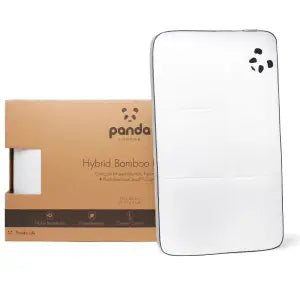 Hybrid Bamboo Pillow
Hybrid Bamboo Pillow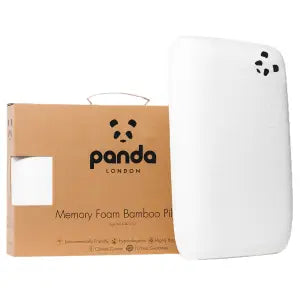 Memory Foam Bamboo Pillow
Memory Foam Bamboo Pillow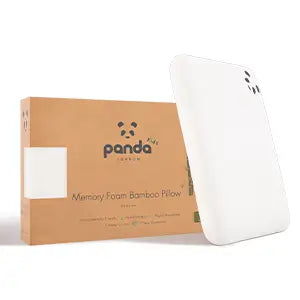 Kids Memory Foam Bamboo Pillow
Kids Memory Foam Bamboo Pillow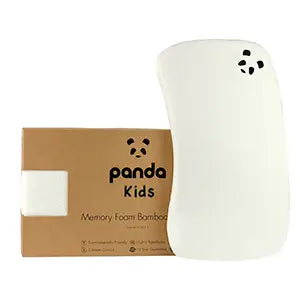 Baby Memory Foam Bamboo Pillow
Baby Memory Foam Bamboo Pillow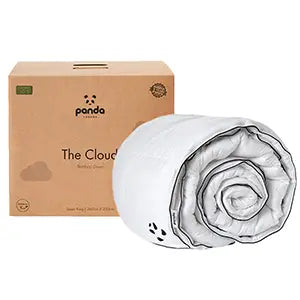 Panda Cloud Duvet
Panda Cloud Duvet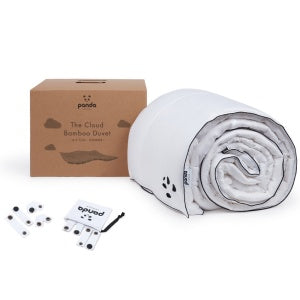 Bamboo Summer Duvet
Bamboo Summer Duvet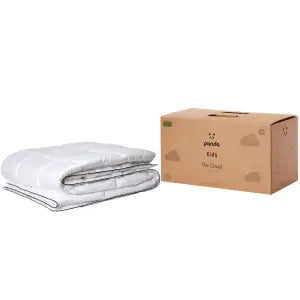 Kids Cloud Duvet
Kids Cloud Duvet
![[MemoryFoamPillow] Panda Luxury Memory Foam Bamboo product image](http://pandalondon.com/cdn/shop/products/Panda-Memory-Foam-Bamboo-Pillow-Panda-Life-scaled-e1623788835840.jpg?v=1750023574&width=800)
![[MemoryFoamPillow] Panda London Bamboo Memory Foam Pillow](http://pandalondon.com/cdn/shop/files/03_Memory_Foam_Bamboo_Pillow__alt01.jpg?v=1750023574&width=800)
![[MemoryFoamPillow] Panda London Bamboo Memory Foam Pillow girl hugging the pillow](http://pandalondon.com/cdn/shop/files/02_Memory_Foam_Bamboo_Pillow__alt02.jpg?v=1750023574&width=800)
![[MemoryFoamPillow] Panda London Bamboo Memory Foam Pillow on a Panda Topper](http://pandalondon.com/cdn/shop/files/Memory-Foam-Bamboo-Pillow-on-Bed-Topper-and-Adjustable-Straps-Shown-Lifestyle-Square-768x768_png.webp?v=1763983719&width=768)
![[MemoryFoamPillow] Panda London Bamboo Memory Foam Pillow Girl Holding Pillow Lifestyle](http://pandalondon.com/cdn/shop/files/01_Memory_Foam_Bamboo_Pillow__alt04.jpg?v=1763983719&width=800)
